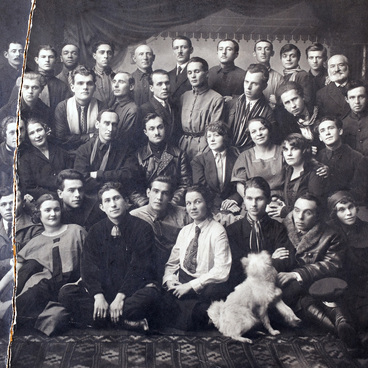St. Nicholas, known in Rus as St. Nicholas the Wonderworker, is one of the most beloved and revered saints in Orthodox Christianity and Catholicism. He was born in the Lycian city of Patara, into a Christian family. Nicholas was deeply religious from childhood, studied the Holy Scriptures and began his church service early.
Legend has it that after visiting Jerusalem and worshiping all the shrines associated with the earthly life of the Savior, Nicholas wanted to stay in the Holy Land as a hermit. However, the voice of God commanded him to return to his homeland. In Lycia, the saint, who embraced a life of solitude, joined the brotherhood of Holy Zion, but again the Lord directed him onto a different path, sending him to help ordinary people. Soon Nicholas was appointed Bishop of Myra of Lycia.
The beginning of his episcopal ministry occurred during the reign of the emperors Diocletian and Maximinus — persecutors of Christians. Later, all kinds of heresies stood in the way of the spread of Christianity. The saint became known as a fighter against heretics and pagans and at the same time as a defender of almost all strata of society, especially the destitute, children, widows, young women without dowries, innocently convicted, and travelers; merchants and sailors consider him their patron.
The hagiography of Nicholas the Wonderworker is replete with miracles, such as the resurrection of a sailor who crashed in a storm. At the same time, many of his benefactions had to do with making someone’s earthly life better. For instance, he secretly gave bags of gold to three sisters, who did not have a dowry, to ensure their happy marriages. Local veneration of the saint began shortly after his earthly death, in the 4th century, and he quickly gained popularity in Byzantium, and then other countries.
The descriptions of the saint included in the iconographic canon were compiled according to the memoirs of the holy bishop’s contemporaries. He appears in them as an old man “with an angelic face” who shines with “holiness and grace of God.” It is customary to depict St. Nicholas the Wonderworker, in accordance with his earthly ministry, in the episcopal sticharion and a phelonion, with an omophorion with crosses on it and the Gospel in his hand. The Borisovka icon painter depicted only the face of the saint and his right hand raised in a blessing gesture. The space around the painted areas is covered by a revetment made of foil which imitates gilding. The Gospel is also made of foil.
Legend has it that after visiting Jerusalem and worshiping all the shrines associated with the earthly life of the Savior, Nicholas wanted to stay in the Holy Land as a hermit. However, the voice of God commanded him to return to his homeland. In Lycia, the saint, who embraced a life of solitude, joined the brotherhood of Holy Zion, but again the Lord directed him onto a different path, sending him to help ordinary people. Soon Nicholas was appointed Bishop of Myra of Lycia.
The beginning of his episcopal ministry occurred during the reign of the emperors Diocletian and Maximinus — persecutors of Christians. Later, all kinds of heresies stood in the way of the spread of Christianity. The saint became known as a fighter against heretics and pagans and at the same time as a defender of almost all strata of society, especially the destitute, children, widows, young women without dowries, innocently convicted, and travelers; merchants and sailors consider him their patron.
The hagiography of Nicholas the Wonderworker is replete with miracles, such as the resurrection of a sailor who crashed in a storm. At the same time, many of his benefactions had to do with making someone’s earthly life better. For instance, he secretly gave bags of gold to three sisters, who did not have a dowry, to ensure their happy marriages. Local veneration of the saint began shortly after his earthly death, in the 4th century, and he quickly gained popularity in Byzantium, and then other countries.
The descriptions of the saint included in the iconographic canon were compiled according to the memoirs of the holy bishop’s contemporaries. He appears in them as an old man “with an angelic face” who shines with “holiness and grace of God.” It is customary to depict St. Nicholas the Wonderworker, in accordance with his earthly ministry, in the episcopal sticharion and a phelonion, with an omophorion with crosses on it and the Gospel in his hand. The Borisovka icon painter depicted only the face of the saint and his right hand raised in a blessing gesture. The space around the painted areas is covered by a revetment made of foil which imitates gilding. The Gospel is also made of foil.


